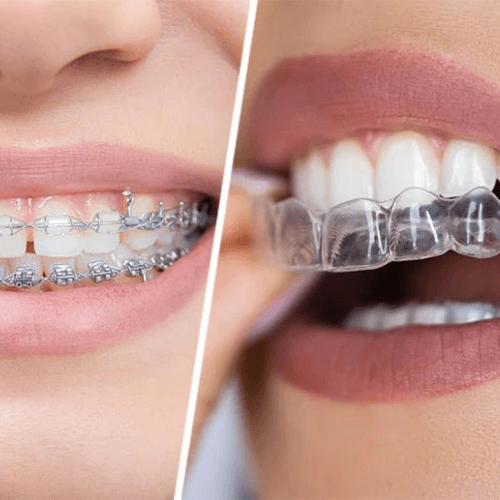If you have crooked teeth or a specific problem such as an overbite, crowding or impacted teeth, you may be wondering whether traditional braces or clear braces/aligners would be the best solution. We would always advise you to talk to an experienced orthodontist at a practice like Heaton Mersey Orthodontics based in Stockport, Manchester, before […]
If you have crooked teeth or a specific problem such as an overbite, crowding or impacted teeth, you may be wondering whether traditional braces or clear braces/aligners would be the best solution.
We would always advise you to talk to an experienced orthodontist at a practice like Heaton Mersey Orthodontics based in Stockport, Manchester, before spending too much time researching your options on the Internet. This is because it may be hard to determine what’s going on in your own mouth without the input of an experienced orthodontist.
You may love the idea of clear braces but be advised that they’re not the best option for your individual case. Similarly, you may think that traditional braces are your only option, but discover that clear aligners could make a big difference.
To give you an overview, we’ve put together a few pros and cons of clear braces and traditional braces:
Aesthetics – Clear aligners 1, traditional braces ½
There’s no getting away from it, when people realise they need orthodontic treatment, how that brace will look is a big concern.
It’s fair to say that clear braces win hands-down in the aesthetics’ stakes. Clear aligners such as Invisalign can be worn virtually undetected and all but invisible to the casual observer.
On the flip side, traditional fixed braces are certainly more noticeable but, because they now use tooth coloured brackets or clear wires, they can provide a much more aesthetically pleasing finish than wire braces of the past.
Comfort – Clear brace 1, traditional braces ½
Clear braces offer a much higher comfort level than traditional braces because they are smooth with no wire or brackets to irritate or cut the inside of your mouth (a problem long associated with traditional braces).
However, clear aligners can cause some discomfort because of the force they apply to move your teeth. Because traditional braces are fixed, the wearer has little option but to deal with the discomfort. With clear braces, you need to use your willpower to keep the aligners in, otherwise – if you remove them every time you feel pain – they won’t get a chance to do their job.
Traditional braces tend to be associated with cuts and sores, especially in the early days after they’re first fitted. Fortunately, advances in orthodontics and the materials we use, means that this is less of a problem with modern wire braces.
Effectiveness – Clear aligners ½, traditional braces 1
When it comes to effectiveness, traditional braces cannot be rivalled. It’s fair to say that clear braces or aligners are incredibly effective for mild cases and straightening, but traditional braces have the scope to treat more complex, functional problems and correct a wider range of flaws.
Your orthodontist is the best person to build a complete picture of what’s happening in your mouth and suggest the most effective solution.
Hygiene – Clear braces 1, traditional braces 0
One of the benefits of clear aligners is that you can remove them to eat, brush or floss your teeth. This means that you can continue to eat what you want, when you want, without the risk of food becoming caught in your braces.
Traditional braces are more restrictive in this sense and need extra special care to ensure that food isn’t left to rot around the brackets and wires.
Convenience – Clear aligners 1, traditional braces ½
In theory, clear braces should require fewer visits to the dentist than traditional braces during the course of your treatment. The aligners can be made in advance and changed at home. On the flip side, because they’re removable, they’re easier to lose and damage, which could mean extra visits to the dentist if you’re not careful.
Treatments using traditional braces usually take longer and cost more, although this is because they are generally used to treat more complicated problems that inevitably require a longer treatment time.
Predicting the outcome – Clear braces 1, traditional braces ½
With a clear brace system such as Invisalign, we use the 3D ClinCheck ©Treatment Plan to predict how your teeth will move with each new set of aligners. This makes it much easier to accurately predict your treatment length than with traditional braces.
Of course, with both brace types, we do have a plan for where your teeth will end up and how they will look at the end of your clear brace treatment.
As mentioned above, it is always best to discuss your concerns and hopes for straighter teeth with an experienced orthodontist. They are best placed to explain which treatment options would deliver the best results.
To discuss whether clear braces or traditional braces would be best for you, give us a call on 0161 947 9900.
